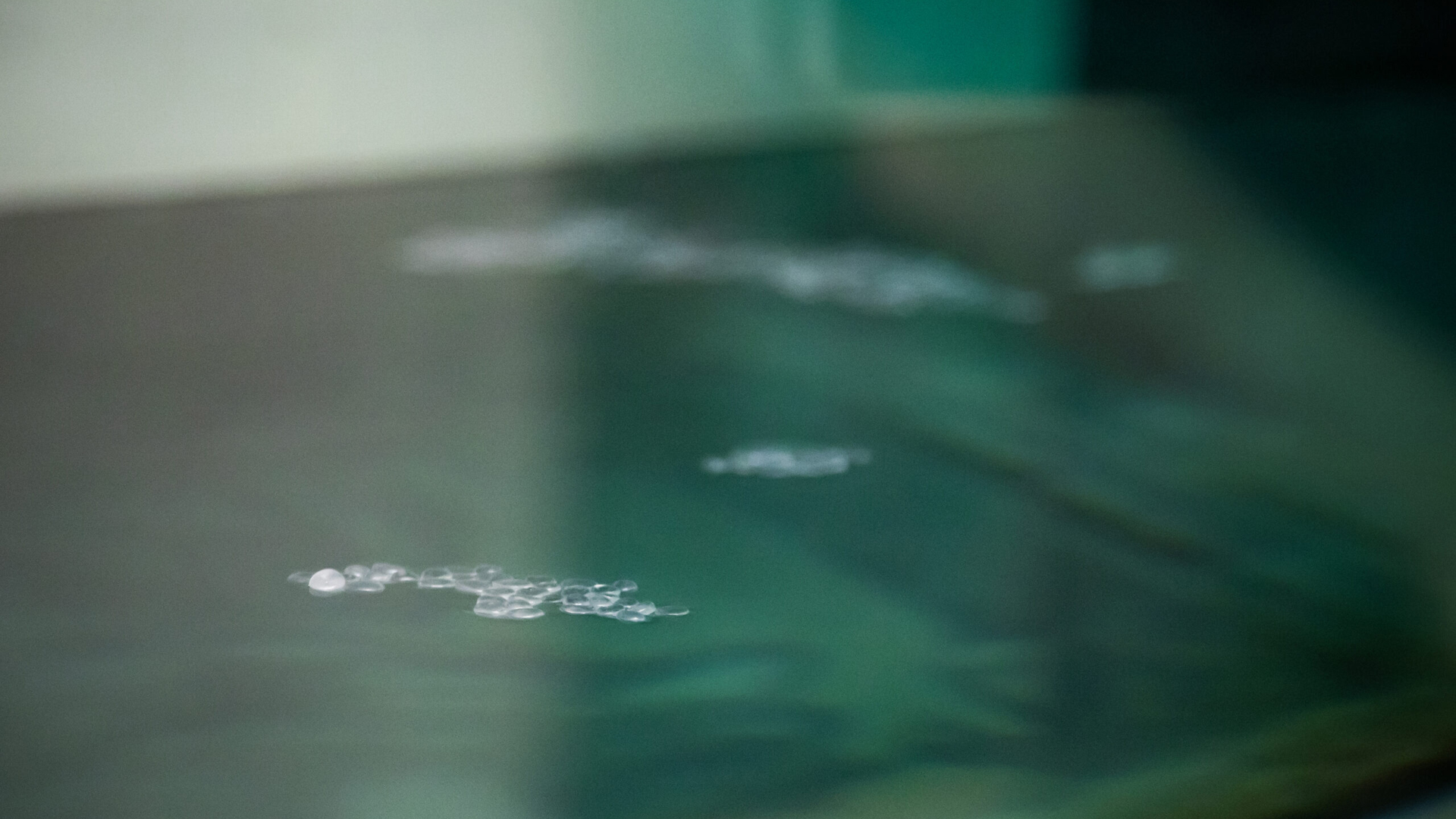Hurricane-tracking satellites can also keep tabs on harmful microplastics in the ocean
Smaller waves form on waters laden with microplastics.

A satellite system designed to track hurricanes can reveal where damaging microplastics accumulate in the ocean. A new study now reveals why.
In 2021, researchers from the University of Michigan and Southwest Research Institute found that spacecraft from the Cyclone Global Navigation Satellite System can distinguish areas in the ocean with higher concentrations of microplastics.
From their orbit some 333 miles (536 kilometers) above Earth, these satellites are able to see odd patches in the ocean with smaller and fewer waves, which were found to be areas with high concentrations of microplastics on the surface. In the new study, the researchers have now revealed what exactly is happening in the microplastics-laden water, and they hope the results will make this new satellite monitoring method more reliable.
Related: Watery graves: Should we be ditching big spacecraft over Earth's oceans?
Microplastics are a huge environmental problem. Less than 5 millimeters across, these minuscule fragments of plastic waste are polluting the entire planet, including the bodies of humans and animals on all continents and in the oceans. Microplastics have been found in drinking water as well as in the food we eat. In the world's oceans, microplastics are particularly harmful. According to the University of Plymouth in the U.K., there are trillions of microplastic particles polluting the marine environments and they are being swallowed up by all kinds of marine creatures from the tiniest plankton to giant whales. These tiny pieces of rubbish are particularly hard to clean up due to their small size, and up until recently were also hard to track, as scientists had to rely on patchy eye-witness accounts.
The new satellite tracking method could improve microplastics monitoring, which in turn could make clean-up efforts easier.
In the new study, researchers from the University of Michigan wanted to test why exactly it is that water thickly polluted with microplastics forms smaller waves. They experimented in a laboratory, creating artificial waves in a small pool. They found that the reason for this reduced wave size in the polluted water is not due to the microplastics alone, and instead is also caused by the presence of surfactants, oily chemicals that these plastics are frequently infused with to alter their properties.
Get the Space.com Newsletter
Breaking space news, the latest updates on rocket launches, skywatching events and more!

"We can see the relationship between surface roughness and the presence of microplastics and surfactants," Yulin Pan, a naval architecture and marine engineering assistant professor at the University of Michigan and corresponding author on the paper, said in a statement. "The goal now is to understand the precise relationship between the three variables."
The researchers want to develop a model that would allow them to not only monitor microplastics from space but also to predict the motion of plastic-polluted water in the ocean.
The study was published on Feb. 8 in the journal Scientific Reports.
Follow Tereza Pultarova on Twitter @TerezaPultarova. Follow us on Twitter @Spacedotcom and on Facebook.
Join our Space Forums to keep talking space on the latest missions, night sky and more! And if you have a news tip, correction or comment, let us know at: community@space.com.

Tereza is a London-based science and technology journalist, aspiring fiction writer and amateur gymnast. Originally from Prague, the Czech Republic, she spent the first seven years of her career working as a reporter, script-writer and presenter for various TV programmes of the Czech Public Service Television. She later took a career break to pursue further education and added a Master's in Science from the International Space University, France, to her Bachelor's in Journalism and Master's in Cultural Anthropology from Prague's Charles University. She worked as a reporter at the Engineering and Technology magazine, freelanced for a range of publications including Live Science, Space.com, Professional Engineering, Via Satellite and Space News and served as a maternity cover science editor at the European Space Agency.









